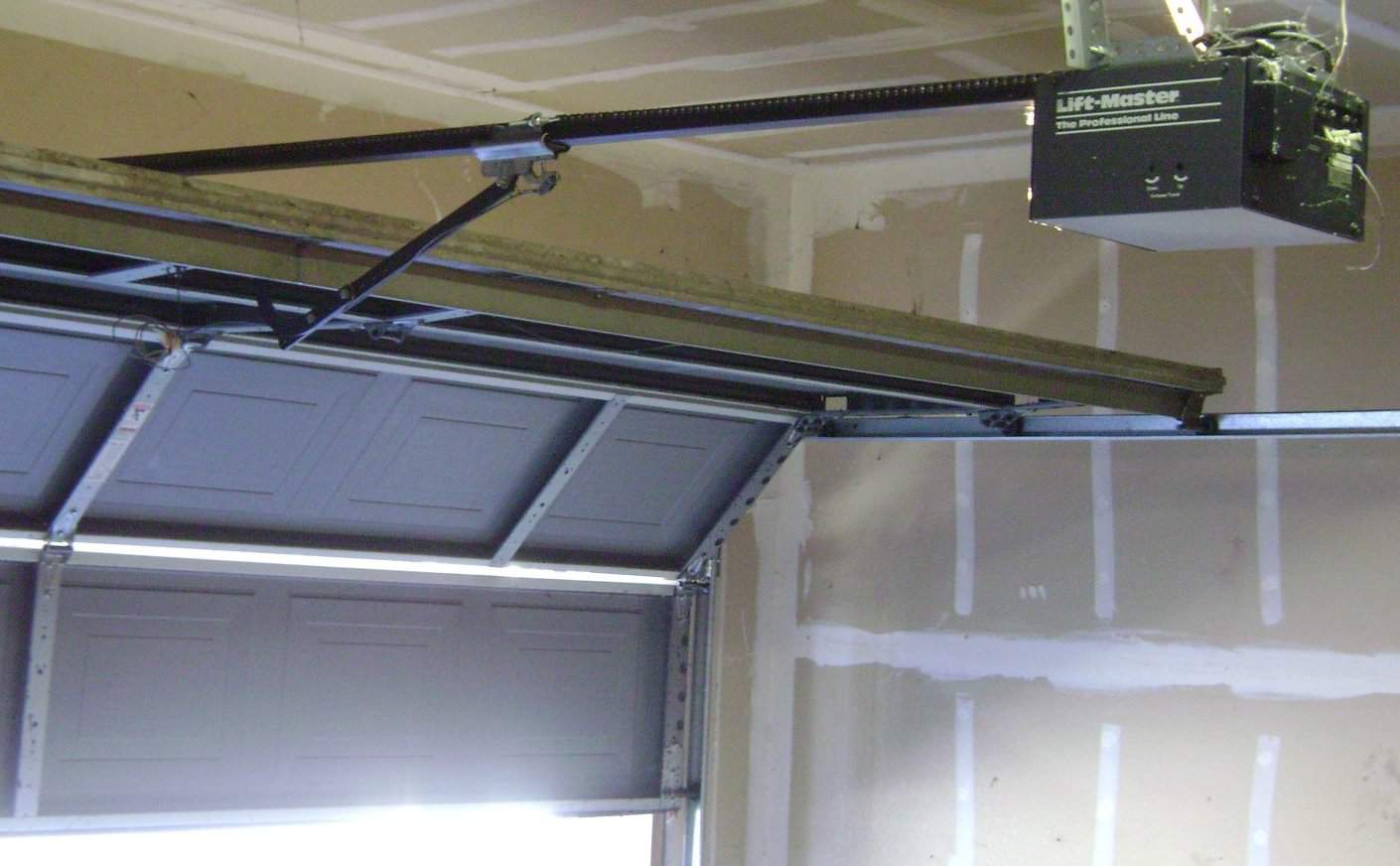If you’re waking up the whole neighborhood with squeaks and squeals whenever you open your garage, it may be time to give your garage door a little TLC. Often, if your garage door is noisy, it needs to be greased. And though this may seem like a daunting task, we have put together a guide on how to lubricate a garage door to walk you through the process. Whether you have an automatic or a manual garage door, follow these five easy steps to lubricate your garage door.
5 Steps to Lubricate Your Garage Door
Step 1: Gather Your Supplies
The only product you absolutely need is some type of lubricant. It is best to use an aerosol, lithium-based grease, like CRC’s White Lithium Grease. If you cannot find that, you could substitute a silicone-based lubricant, such as Du Pont’s Silicone Lubricant. Be aware that you shouldn’t use regular WD-40, since that is a degreaser, which is the opposite of what you want. Don’t use oil to grease your garage door either, since oil will attract dirt and makes the hinges stiffer in the long run.
However, it is useful to have a degreaser on hand, like WD-40’s Degreaser, along with a rag to clean off certain areas of your garage door.
Step 2: Close Your Garage Door
Make sure that your garage door is closed and, if you have an automatic garage door opener, that it is turned off and disconnected from the motor. You don’t want any accidents happening!
Step 3: Clean The Tracks
The metal tracks that your garage door runs along should not be greased. Grease would attract dirt which can cake up and harden causing future problems. Instead, you want to clean the tracks. Take a damp rag and wipe the tracks clean. If water and elbow grease doesn’t cut through the grime, you can always use a degreaser for any hard-to-remove dirt and debris.
Step 4: Grease Your Garage Door
There are several areas to be sure to hit when greasing your garage door. As you spray, it’s helpful to have a rag in hand to wipe away any excess grease. And while you’re at it, take the time when spraying to inspect the parts for damage and wear in case it’s time to replace any parts.
- Hinges — The hinges are attached to the back of the garage door, both in the middle and along the side. Open your garage door by increments, spraying where the row of hinges bend. Hit all the pivot points when you spray.
- Lock — Although your lock may not squeak, it’s best to keep it regularly lubricated so it does not seize up.
- Arm Bar — Located at the top of the garage door, the arm bar should also be lubricated.
- Rollers and Shafts — Rollers are the round pieces that sit in the garage door tracks and can be made of plastic, metal, or nylon. There are different schools of thought regarding which types of rollers to grease and which to avoid. Although some garage door brands say there is no harm in greasing plastic rollers, they also admit that it does little good, and others believe that you should not grease plastic rollers since the grease can break down the plastic over time. Instead, take this time to inspect them to see if they’re cracked or worn down; they are only meant to last a couple of years. With metal rollers, you should be able to see exposed ball bearings, which you should grease. Nylon rollers will either have no ball bearings or sealed ball bearings. Like with plastic rollers, some companies claim you can grease the nylon rollers that have no ball bearings but, again, don’t believe it does much good. Others say you should avoid greasing any nylon rollers, and all agree that you should not grease sealed nylon rollers. No matter the type of roller, they should have a metal shaft that you can grease where it connects to the door.
- End Bearing Plates and Pullies — These are located near the top of the garage door, and both the bearing plates and pullies can be greased. Just like with the rollers, however, check with the pullies to see if the ball bearings are exposed. If so, make sure to grease those, but, if not, there is no need to grease them.
- Springs — Torsion springs wind and unwind when the door moves and are attached to a shaft above your door. These springs should be greased since the coils rub against each other. Alternatively, you may have extensions springs, which are on the sides of your garage door. Many garage door brands still recommend that you grease these, but others find it unnecessary. Once you spray the springs lightly, open and close the door a couple of times to work in the grease.
- Rail — This runs along the top of your garage, and the trolly that moves back and forth along it. Grease the top of the rail, because that’s where the trolly clamps on. Avoid the impulse to grease the bottom of the rail; it doesn’t actually do anything but drip grease everywhere.
- Chain — If you have an automatic garage door, you may be tempted to grease the chain as well. While some places do recommend lubricating the chain occasionally, others say that the chain already has a protective coating and only needs to be wiped down occasionally, possibly with WD-40. Read up on what your specific garage door manufacturer recommends.
Step 5: Work in the Grease
After lubricating everything, open and close the door several times manually to work in the grease. If you have an automatic garage door opener, you can reconnect the power and test it to make sure everything still works smoothly.
Now, your garage door should be lubricated and quiet, so you can enter or leave your garage without the whole neighborhood knowing.



